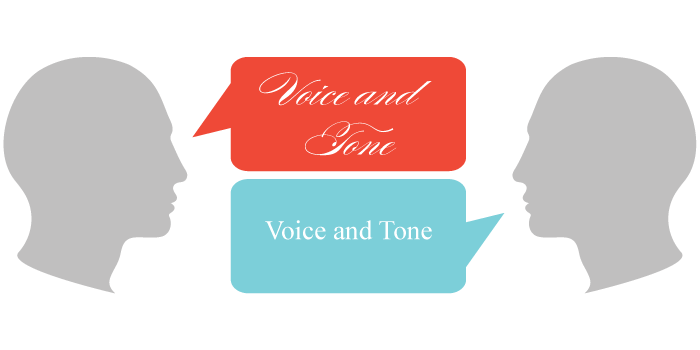Blog • Insights
Finding Your Organization’s Voice

See what I did there? I just wrote a sentence that (hopefully) sounded casual, fun, and authoritative.
I could have written: “Herein thou shalt find a vetted and venerable guide to developing distinguished prose for thy non-governmental entity.” Both sentences say the same thing-but the first follows Forum One’s internal voice and tone. The second, well, doesn’t. It’s pedantic, officious, and crusty.
In short, these two sentences have a different “voice.” Consistent voice, along with tone and style, are often missing from organizations’ content because they don’t provide clear guides to their staff.
Organizations often struggle to maintain their voice because they don’t give their staff consistent guidance. With this guide, I’m providing you tips for creating a voice, tone, and style guide for your organization.
Style guides are important because they help enforce consistency across messages and channels. As Kevan Gilbert says, “consistency is memorable.” Consistency leads to more distinctive, effective, audience-centric communication.
Creating a voice, tone, and style guide is one of the most effective ways you can extend your organization’s influence.
At the end of this article, I provide a few guides for getting started. But first, let’s make sure we understand each other.
Voice, tone, and style are actually three separate things. Let’s review them in turn:
- Voice: Your organization’s voice is described by adjectives describing what your company’s brand personality is and is not. For instance, Forum One’s internal guide says that our voice must be “understanding but not condescending, authoritative but not bossy, fun but not juvenile, and clever but not cliché.” Stephanie Schwab has created a nice diagram that shows various character attributes available for your brand’s voice.
- Tone: Tone is a subset of voice that describes how we shape the voice to fit the audience, situation, or type of content. It shapes the voice to match the context of the message. One doesn’t speak to their mother the same way they speak to their children, even if the voice and message are the same. For example, say this out loud as you would to your mom and then as you would say it to a three-year-old: “Did you finish your work?” Your tone can even vary by message, even if the audience is the same. Imagine calling your mother to tell her you won the lottery. Then imagine how different your tone would be if you were calling to ask her for money. Likewise, an organization’s blog posts should have a different tone than it’s annual report.
- Style: Style is an in-house guide to what your writing should look like in terms of spelling, capitalization, grammar, and abbreviations. It tells you how to punctuate. Typically alphabetized, it ensures that documents are written and edited consistently. Perhaps most importantly, it settles arguments. I mean, who needs another fistfight over the Oxford Comma? A style guide could also include design elements such as logo usage, fonts, and more. But for now, let’s focus on writing.
For inspiration, let’s survey a few examples. MailChimp (or is it MailKimp?) has one of the most well-known guides because their voice is distinctive, and MailChimp’s Voice and Tone Guide is public. If you read it, you can see that they have considered a variety of contexts all the way down to response messages. For instance: a sample success message is: “Fine piece of work! You deserve a raise.” That message makes me feel warm inside. But what if a site error just caused the user to lose an hour of work? One needs to strike a rather different tone, right?
The University of Denver’s Voice and Tone Guidelines is another good example. It describes the University’s voice as “adventurous and engaging” and “open and affirming.” It shows that there is a variation in tone. For marketing copy it advises the use of “vivid adjectives and verbs. For admission letters it directs that although these are more formal, the language should maintain “enthusiastic, friendly voice and personal engagement.”
Thankfully, you don’t necessarily need to write an entirely custom style guide. As a base, you can tell your staff to use published style guides from the Associated Press, MLA, or the Chicago Manual of Style. But it’s also helpful to have an-house style for those special cases that are unique to your work. For instance, our own style guide requires that WordPress contain a capital “P.”
For another example, consider this page from the Economist’s Style Guide. Like all good style guides, it’s a fun and informative read. The Economist’s guide explains how to use “aetiology” and “etiolate” correctly. It also advises that “gubernatorial is an ugly word that can almost always be avoided.”
So, how do you get started? Here are a few resources:
- Understanding Voice and Tone in Writing
- 5 Steps to Creating a Voice and Tone Guide That Your Coworkers Will Actually Use
- Voice, Tone, and Style: The Whys, Wheres, and Hows
- A Complete Process for Developing a Content Style Guide
- MailChimp’s Style Guide including their Voice and Tone Guide
Once you start diving into it, you’ll see that developing the guide and spurring adoption can be trickier than you might think. Contact us, if you want to talk to us about how we might help.